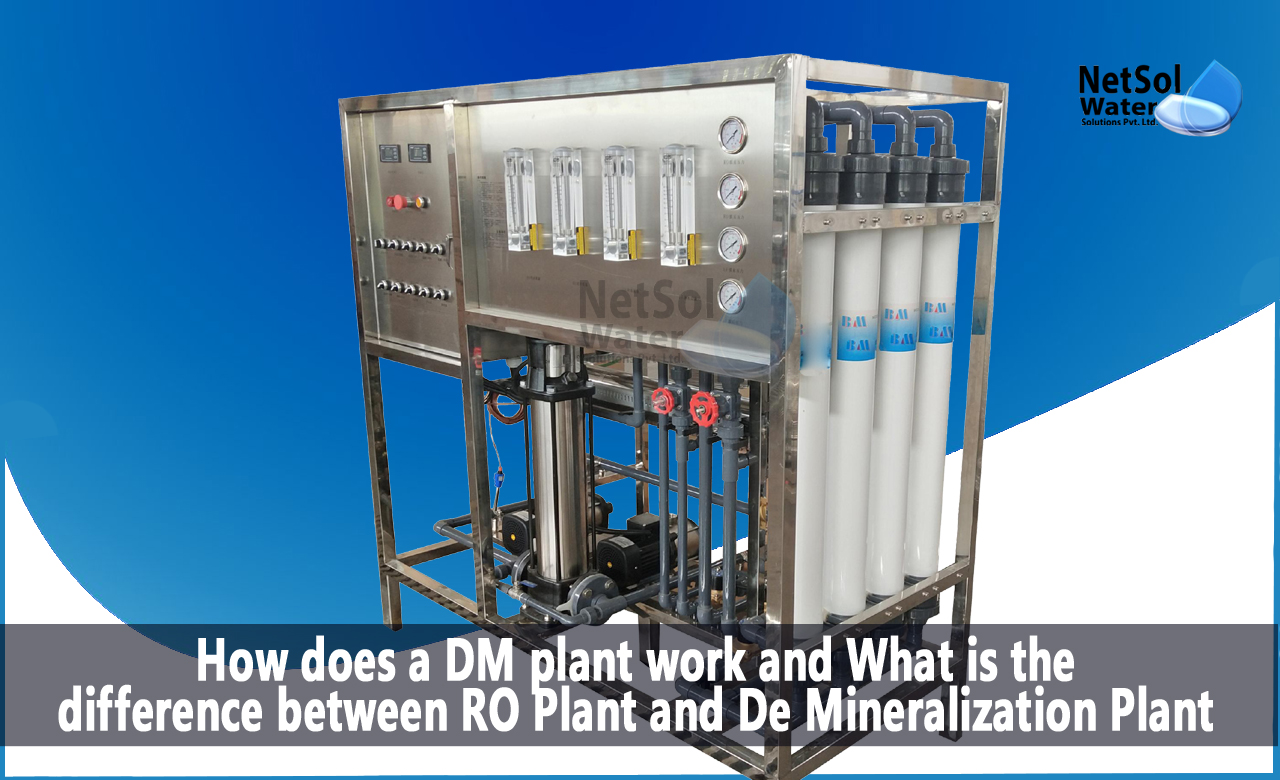How does a DM pla?nt work and difference between RO Plant and DM Plant?
A de-mineralization plant, often known as a DM plant, is a type of water treatment system used to get rid of salts and dissolved minerals from water. This procedure is crucial for a number of industrial applications where minerals might cause issues, including boiler feed water, cooling systems, and several manufacturing procedures. Here is a brief description of how a DM Plant operates:
1.Ion Exchange Resins: Ion exchange resins make up the bulk of a DM plant. The synthetic materials used to create these resins often have functional groups that allow them to exchange ions with the dissolved minerals in water.
2.Two Resin Beds: The cation exchange resin bed and the anion exchange resin bed are the two resin beds that are typically found in DM plants.
· Cation Exchange: Positively charged ions (cations) including calcium (Ca2+), magnesium (Mg2+), and sodium (Na+) are largely removed via the cation exchange resin bed. On the resin, these ions are converted for hydrogen ions (H+).
· Anion Exchange: The anion exchange resin bed eliminates anions, which are negatively charged ions, such as bicarbonate (HCO3), sulphate (SO42), and chloride (Cl). On the resin, these ions are converted for hydroxide ions (OH).
3.Regeneration: Over time, the withdrawn ions fill the ion exchange resins to saturation. A regeneration process is started in order to regenerate the resins. The anion exchange resin is renewed with caustic soda (sodium hydroxide), while the cation exchange resin is renewed with acid. This improves the resins' ability to exchange ions.
4.Mixed Bed: To produce ultra-pure water, a mixed bed of cation and anion exchange resins may occasionally be utilised. By guaranteeing that even minute amounts of ions are eliminated, the mixed bed offers extra purification.
5.Purified Water: After being processed by the ion exchange resins, the water has undergone a large de-mineralization process, with the majority of the dissolved minerals and salts being eliminated. Then, it is deemed to be pure and appropriate for its intended industrial application.
Difference Between RO Plant and De-Mineralization Plant (DM Plant):
Purpose:
· RO Plant: Reverse Osmosis (RO) plants are primarily designed to remove impurities, contaminants, and Total Dissolved Solids (TDS) from water. RO is often used to produce high-purity drinking water, dialysis water, and in various industrial applications where water quality is crucial.
· DM Plant: De-Mineralization (DM) plants, on the other hand, are specifically designed to remove dissolved minerals and salts from water. They are commonly used in industrial settings to produce demineralized or de-ionized water for applications where the presence of minerals can be problematic.
Process:
· RO Plant: RO relies on a semi-permeable membrane to separate water molecules from dissolved ions and molecules. It is a physical filtration process that does not involve ion exchange.
· DM Plant: DM plants use ion exchange resins to selectively remove cations and anions from water. It is a chemical process that involves the exchange of ions between the resin and the water.
Output Quality:
· RO Plant: RO typically produces water with low TDS levels and high purity, suitable for various applications, including drinking water and electronics manufacturing.
· DM Plant: DM plants are specifically designed to produce ultra-pure water with minimal to no dissolved minerals and ions. This makes it suitable for applications like power plant boiler feed water and pharmaceutical manufacturing.
Regeneration:
· RO Plant: RO membranes do not require regeneration in the same way ion exchange resins do. Instead, they require periodic cleaning and replacement.
. DM Plant: DM plants require a regeneration process to restore the ion exchange resins' capacity. This involves using chemicals to remove the absorbed ions from the resins.



